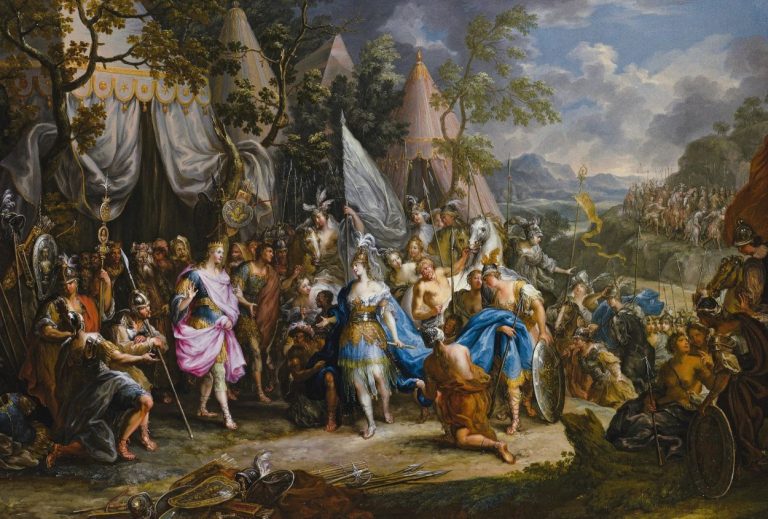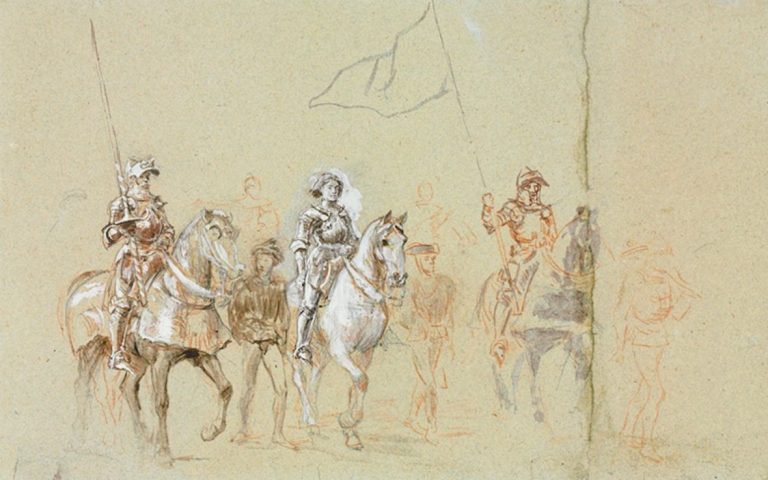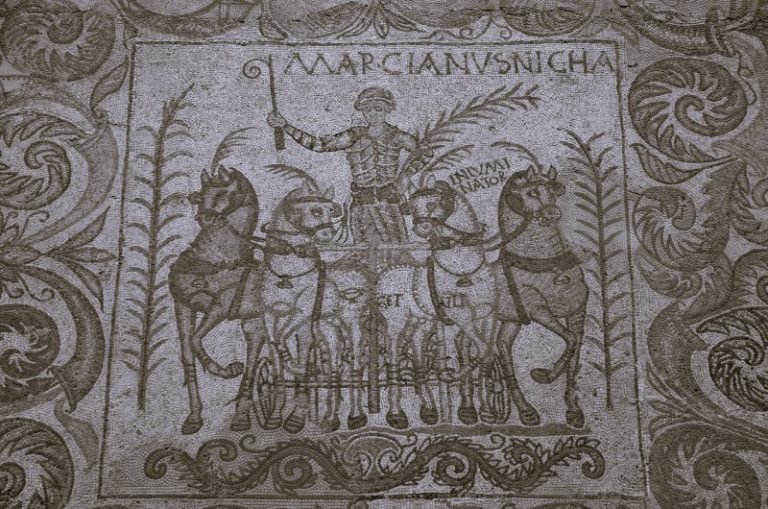
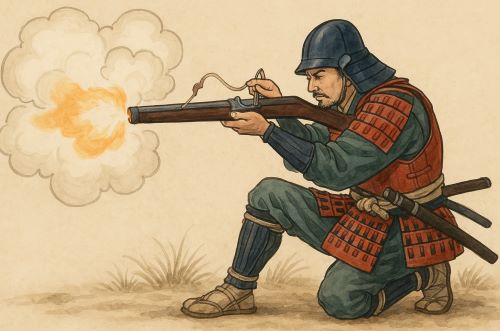
The Tanegashima was more than a weapon. It was a historical fulcrum, a site where technology, identity, and power collided.

By Matthew A. McIntosh
Public Historian
Brewminate
Introduction: The Sound of Thunder in the Land of the Rising Sun
The year 1543 marked the beginning of an irreversible transformation in Japan’s martial and political landscape. On the small island of Tanegashima, a curious object arrived aboard a Chinese vessel manned by Portuguese traders. It would soon bear the name of the island itself, Tanegashima, and it belched fire with deadly precision. The Japanese, whose warrior ethos had long been tied to the arc of the sword and the speed of the bow, had encountered the European matchlock gun. The ripples from that event would echo throughout the Sengoku period, altering not only the mechanics of warfare but also the architecture of power and the aesthetics of martial virtue.
The story of the Tanegashima is not merely one of technological diffusion. It is a crucible in which Japan’s self-conception, military practice, and social structures were reforged. While Western historiography often renders the adoption of the gun as an inevitable march of progress, Japan’s selective, strategic, and even aesthetic integration of the matchlock speaks to a far more nuanced cultural encounter. The Tanegashima was neither wholly foreign nor fully assimilated. It became, instead, something uniquely Japanese.
The Arrival: Firearms and First Contact
According to contemporary sources, the Portuguese landed by chance on Tanegashima in 1543 after being blown off course.1 The island’s lord, Tanegashima Tokitaka, recognized the strange weapons the foreigners carried and immediately saw their potential. Within a year, Japanese smiths had begun reproducing them. This moment has often been romanticized as a rapid case of adoption, but the reality was more complex.
The Japanese artisans struggled with certain technical elements, particularly the screw threading required for securing the firing mechanism.2 These difficulties were eventually overcome through Portuguese tutelage, but the delay illustrates the contingency and collaboration embedded in early gun diffusion. This was not a case of wholesale technological transfer; it was a negotiation of knowledge, mediated by cultural curiosity and practical need.
Moreover, Tokitaka’s patronage of the gunsmithing enterprise reveals the strategic acumen of Japan’s local lords, or daimyō. In a fragmented political order where loyalty was fluid and boundaries were contested, even a minor technological edge could translate into regional dominance. The matchlock, though primitive by later standards, offered precisely such an advantage.
The Sengoku Landscape: Guns and the Logic of Fragmentation

Japan in the sixteenth century was a cauldron of civil war. The Ashikaga shogunate had become a nominal force, and regional warlords carved up the archipelago in pursuit of land, power, and legitimacy. Into this world of castles, betrayals, and shifting alliances came the Tanegashima. It did not arrive as a foreign invader but as a mercenary, ready to serve the hand that wielded it.
The use of firearms spread quickly among ambitious daimyō, most notably Oda Nobunaga. A master of logistical warfare and psychological shock, Nobunaga famously deployed volley fire tactics at the Battle of Nagashino in 1575, annihilating Takeda cavalry with coordinated matchlock barrages.3 Yet this battle, often cast as Japan’s “gunpowder revolution,” should not be seen as the triumph of Western tactics. The guns were deployed in ways that reflected Japanese military philosophy: discipline, precision, and choreography. Nobunaga’s genius lay not in mimicking Europe but in transforming the gun into an extension of his strategic culture.
Other lords followed suit, but with varying intensity. Some resisted the widespread adoption of guns, fearing not only their volatility but their challenge to the samurai ideal. The sword remained a symbol of spiritual refinement and noble bearing, while the gun – impersonal, mechanical, and loud – threatened to level distinctions. This resistance underscores how the Tanegashima was more than a tool; it was a challenge to the metaphysics of war.
Artisanship and Adaptation: The Making of a Japanese Matchlock

The transformation of the Portuguese arquebus into the Japanese Tanegashima was no simple act of copying. Japanese craftsmen did not merely replicate; they refined, localized, and aestheticized the weapon. The result was a gun that bore the stamp of Japanese identity in both form and function.
Matchlocks were crafted with remarkable care. Stocks were often lacquered, barrels inscribed with calligraphy, and the mechanics adjusted to suit Japanese hands and conditions.4 The production centers in Sakai and Kunitomo became renowned for their quality, creating an arms industry that could supply thousands of guns per order, such as Nobunaga’s reported commission of 3,000 for Nagashino.5 This was industrial-scale production, guided not by profit but by patronage and prestige.
This craftsmanship extended to battlefield logistics. Japanese commanders developed specialized tactics, including rotating fire lines and protective screens against rain, to maximize the reliability of the matchlock in Japan’s humid climate. The gun was not simply adopted; it was naturalized into the rhythms of Japanese warfare.
The Tanegashima and the Samurai Ethos: Aesthetic Contradictions
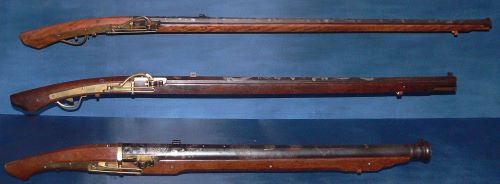
Perhaps the most intriguing aspect of the Tanegashima’s story is its ambiguous relationship with samurai identity. The samurai were not merely warriors; they were cultivated men, schooled in bushidō, calligraphy, poetry, and ritual suicide. The sword, especially the katana, had long served as the symbol of the samurai’s soul. What, then, could the gun represent?
The gun’s arrival challenged this ideal. It required no lineage, no spiritual training, no artistry. A peasant conscript could kill a lord from fifty yards with a twitch of the finger. The weapon’s deadliness was democratizing. For many samurai, this was a betrayal of martial beauty. Yet for others, particularly those like Nobunaga who prioritized order over nostalgia, the gun was a necessary evil, even a poetic irony: that peace could be forged through impersonal violence.
Notably, while the gun rose in prominence during the sixteenth century, the sword retained its status in iconography and ceremonial use. Guns were used, but swords were revered. This duality speaks to the Japanese genius for syncretism, for holding tension without collapse. The Tanegashima, in this frame, became an emblem of necessity rather than virtue.
Decline, Regulation, and Memory: Guns in Tokugawa Japan
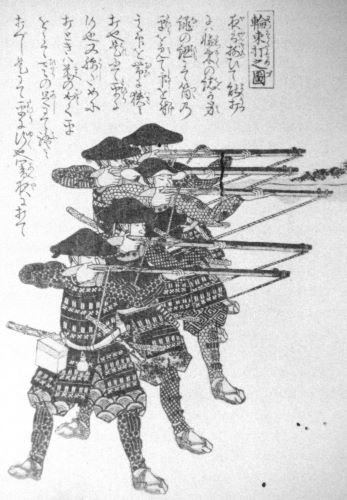
With the unification of Japan under Tokugawa Ieyasu in the early seventeenth century, the gun gradually receded from central visibility. Though it remained part of military arsenals, the Tokugawa shogunate implemented tight controls over firearms production and use.6 This regulatory turn has often been interpreted as technological regression, but in reality, it reflected a political decision to limit volatility in a newly pacified realm.
The long peace of the Edo period (1603–1868) reduced the demand for guns. Samurai returned to bureaucratic roles, and martial prowess became symbolic rather than practical. The sword regained its solitary prominence. Matchlocks, while not banned, were largely relegated to ceremonial or hunting roles.
Yet memory persisted. The Tanegashima remained an artifact of the age of ambition, a relic of fire and chaos. In artistic depictions and military treatises, the gun retained its aura of transformative violence. Even in its decline, it haunted the imagination of a society that had once been shaped by its thunder.
Conclusion: Echoes from Tanegashima
The Tanegashima was more than a weapon. It was a historical fulcrum, a site where technology, identity, and power collided. Its journey from a Portuguese novelty to a symbol of martial modernity in Sengoku Japan reveals the layered dynamics of cultural adaptation. The Japanese did not merely receive the gun; they interpreted it, restructured it, and in some ways, resisted it.
In doing so, they demonstrated that technological change is never unidirectional. It is filtered through values, myths, and material realities. The Tanegashima, both as object and as symbol, reminds us that even the most explosive revolutions are mediated by human hands and human stories.
Appendix
Footnotes
- George Sansom, A History of Japan, 1334–1615 (Stanford: Stanford University Press, 1961), 215.
- Noel Perrin, Giving Up the Gun: Japan’s Reversion to the Sword, 1543–1879 (Boulder: Shambhala, 1988), 27.
- Stephen Turnbull, Samurai Warfare (London: Cassell & Co, 1997), 112.
- Karl Friday, Samurai, Warfare and the State in Early Medieval Japan (London: Routledge, 2003), 177.
- William Wayne Farris, Japan’s Medieval Population: Famine, Fertility, and Warfare in a Transformative Age (Honolulu: University of Hawai‘i Press, 2006), 162.
- David L. Howell, Geographies of Identity in Nineteenth-Century Japan (Berkeley: University of California Press, 2005), 49.
Bibliography
- Farris, William Wayne. Japan’s Medieval Population: Famine, Fertility, and Warfare in a Transformative Age. Honolulu: University of Hawai‘i Press, 2006.
- Friday, Karl. Samurai, Warfare and the State in Early Medieval Japan. London: Routledge, 2003.
- Howell, David L. Geographies of Identity in Nineteenth-Century Japan. Berkeley: University of California Press, 2005.
- Perrin, Noel. Giving Up the Gun: Japan’s Reversion to the Sword, 1543–1879. Boulder: Shambhala, 1988.
- Sansom, George. A History of Japan, 1334–1615. Stanford: Stanford University Press, 1961.
- Turnbull, Stephen. Samurai Warfare. London: Cassell & Co, 1997.
Originally published by Brewminate, 07.29.2025, under the terms of a Creative Commons Attribution-NonCommercial-NoDerivatives 4.0 International license.
